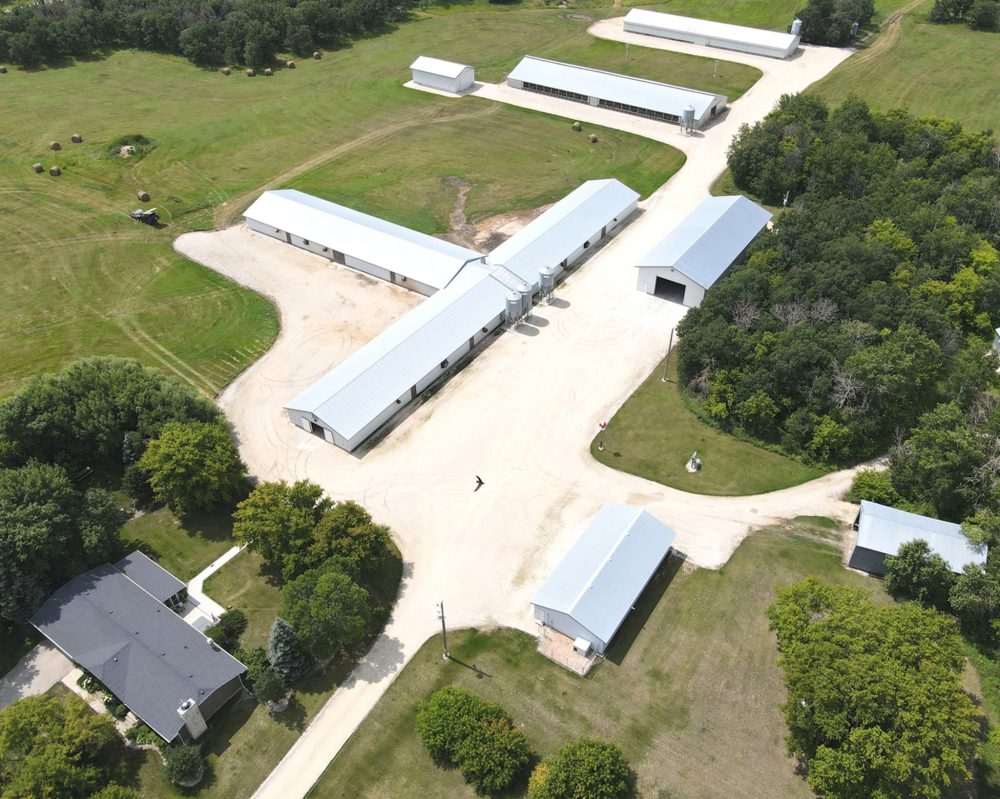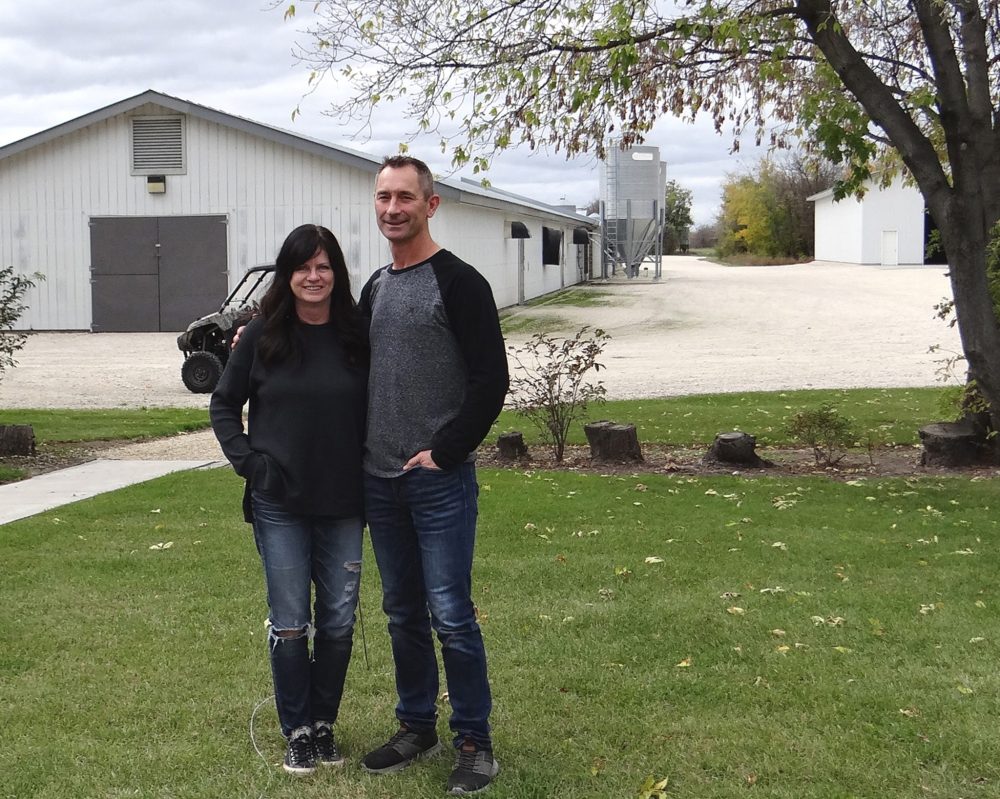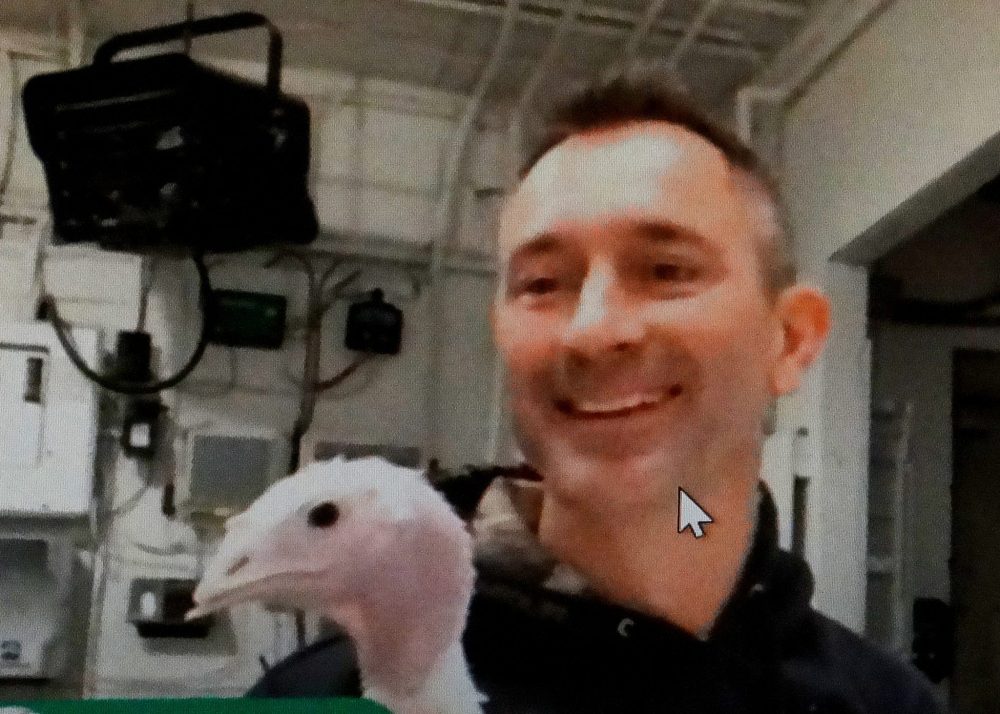Wiebes’ move to Blumenort leads to Gunton turkey farm
Advertisement
Hey there, time traveller!
This article was published 20/11/2023 (531 days ago), so information in it may no longer be current.
When Quentin Wiebe decided to make a career change from building houses to raising turkeys, an uncle who lived in the Balmoral area steered him to the perfect “turn-key” operation.
Today, Quentin and his wife Theresa, raise 58,000 birds a year at Timberline Farms, in five barns totalling 28,000 square feet of heated open space and in an additional screened pole barn of 12,000 square feet, used in the summertime.
When talking about poultry, there always is a Blumenort connection and for the Wiebes that came on both sides of the family. After the couple was married in 1991, they moved to Blumenort, renting a home on the yard of a local turkey farm.

Theresa worked at Friendly Family Farms hatchery in Blumenort for a couple of years, while Quentin worked in construction, framing houses. In the off season, when construction was slow, he would help out on local poultry farms and that sparked his interest in turkeys.
It was at a family get-together that Quentin told his uncle about his interest in farming. That led to a phone call a month later about the Gunton area farmer, who had been raising turkeys for more than 25 years and was ready to sell his farm. It didn’t take long for the Wiebes to decide to take the plunge and launch a new career in farming.
Now, they themselves have been turkey farmers for more than 25 years, and have enjoyed raising a family of two girls while working and living on the farm.
The Wiebes raise seven different flocks a year, ranging in number from 7,000 to 10,000 birds at a time. The white Nicholas or Hybrid turkey poults are delivered to Timberline from the nearby Charison’s Turkey Hatchery, usually within 24 hours of hatching.
The turkey poults weigh 65 grams and are described by Theresa as “little yellow balls of fluff.”
Turkey poults don’t stay as “little yellow balls of fluff” for very long. In 11 weeks they will have grown to market weight, gaining a kilogram for every two kilograms of feed. The turkey is indeed an efficient meat producer and anything under the two-to-one ratio is considered very good, Wiebe explains.
The first flock arrives at Timberline in February and the last flock is shipped to the Exceldor (Granny’s) processing plant at Blumenort at the end of November. In early 2020

Granny’s Poultry merged with Exceldor Cooperative to form the largest poultry cooperative in the country, with plants in Quebec, Ontario and Manitoba, selling under the brand names of Granny’s, Exceldor, Butterball and Saha Halal.
From November until February, Quentin says their time is spent cleaning the barn and maintaining the equipment, getting ready for the first flock in February.
“With maybe a little bit of winter holiday time included.”
The Wiebes raise only hens for the fresh turkey market and most of their birds are grown to 6.5 kg and shipped to Blumenort every month, with the flock varying in age and size.
They don’t grow birds just for the more traditional times of the year, like Thanksgiving, Christmas or Easter when turkey is the most popular item on the menu. Wiebe says people eat turkey year-round and not only at the holiday seasons.
“Today, families prefer a smaller bird and we encourage them to serve up turkey regularly throughout the year.”
Earlier this month, the Wiebes provided a virtual tour of their farm as part of Agriculture in the Classroom’s popular, going “Follow the Farmer” series.

A video gave elementary students a look behind the barn doors and taught them about the food, water and shelter that turkeys need to grow so they can provide healthy meat for the family’s dinner tables.
The technology Quentin and Theresa use to create a habitat that meets the needs of the turkeys and how they care for their flock at each stage to keep turkeys healthy and comfortable, are part of the video presentation.
Following the video, students peppered Quentin with questions ranging from, “Do turkeys smile?”, to “How fast can a turkey run?”, and “Do turkeys have teeth?”
During this part of the question period, Quentin went into another part of the barn and picked up a turkey, and completed the session with the students holding it. He told the students turkeys could run really fast and then held up the bird to show off its “smile”.
In response to another question, Quentin told students he really enjoyed being a turkey farmer. As it is only a stone’s-throw from the house to the barn, he is close to his work. Whenever he goes into the barn, the turkeys all come running to greet him and he feels like he has a lot of friends.
A learning guide is provided for students to work through a Canada Foods Guide Activity “Turkey’s place on your plate,” where they will learn about “Eat Well” plate and how they can put together a nutritious school lunch that include turkey as meat protein.
AITC’s Follow the Farmer series is in its third year. It started during the COVID pandemic, when classroom visits by volunteers were not possible. The series also filled in for the Amazing Agriculture Adventure, which Agriculture in the Classroom suspended during COVID.

Penner Farm Services at Blumenort stepped up as a major corporate sponsor for the creation of videos for the series, which toured seven farms during its first two years. Another three are slated for this school year..
When the series was launched in October of 2021, Penner Farm spokesperson Ashley Graye said the company was pleased to be partnering with Agriculture in the Classroom, because of the importance of teaching kids where their food comes from.
“This program brings the farm to the students and really shows them what agriculture is all about.”
The Amazing Agriculture Adventure has returned to the Food and Discovery Centre and the University of Manitoba’s research barns at Glenlea this year, but elementary students will have an added bonus as they “follow the farmer” to learn about turkey, potato and soybean production.
